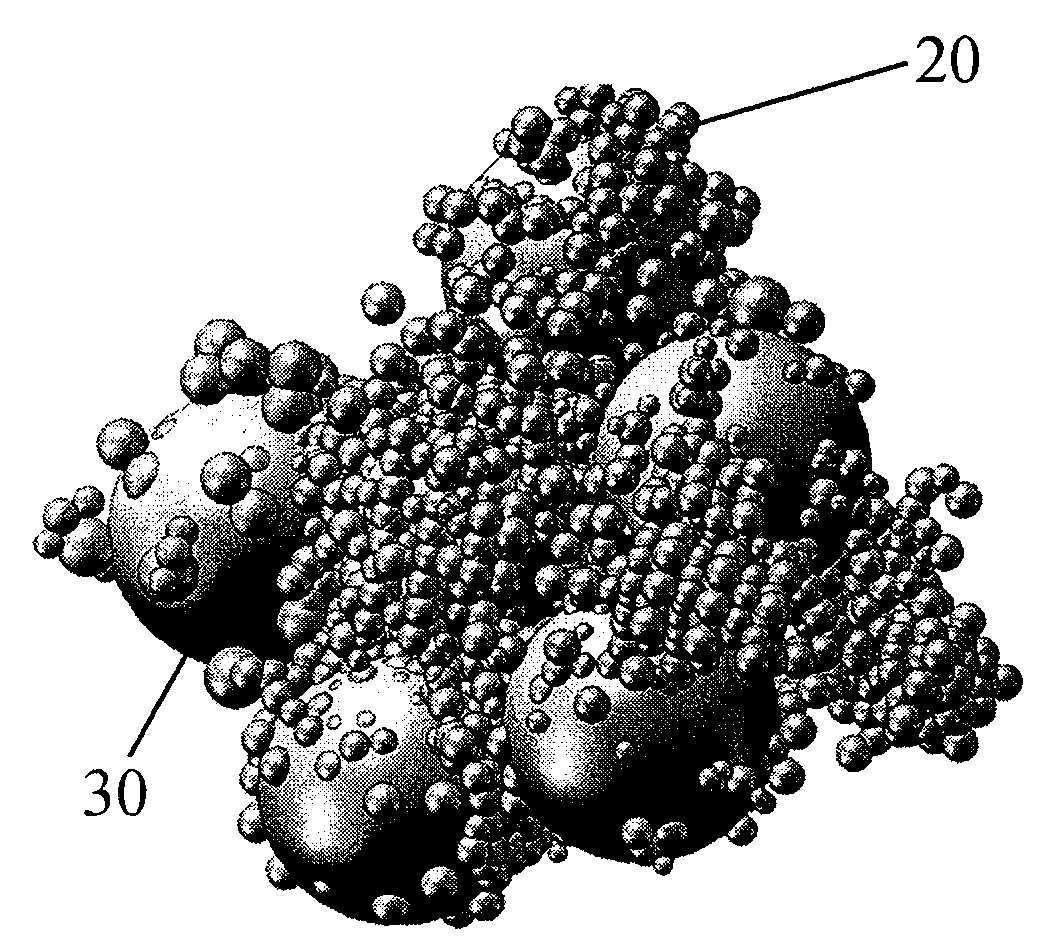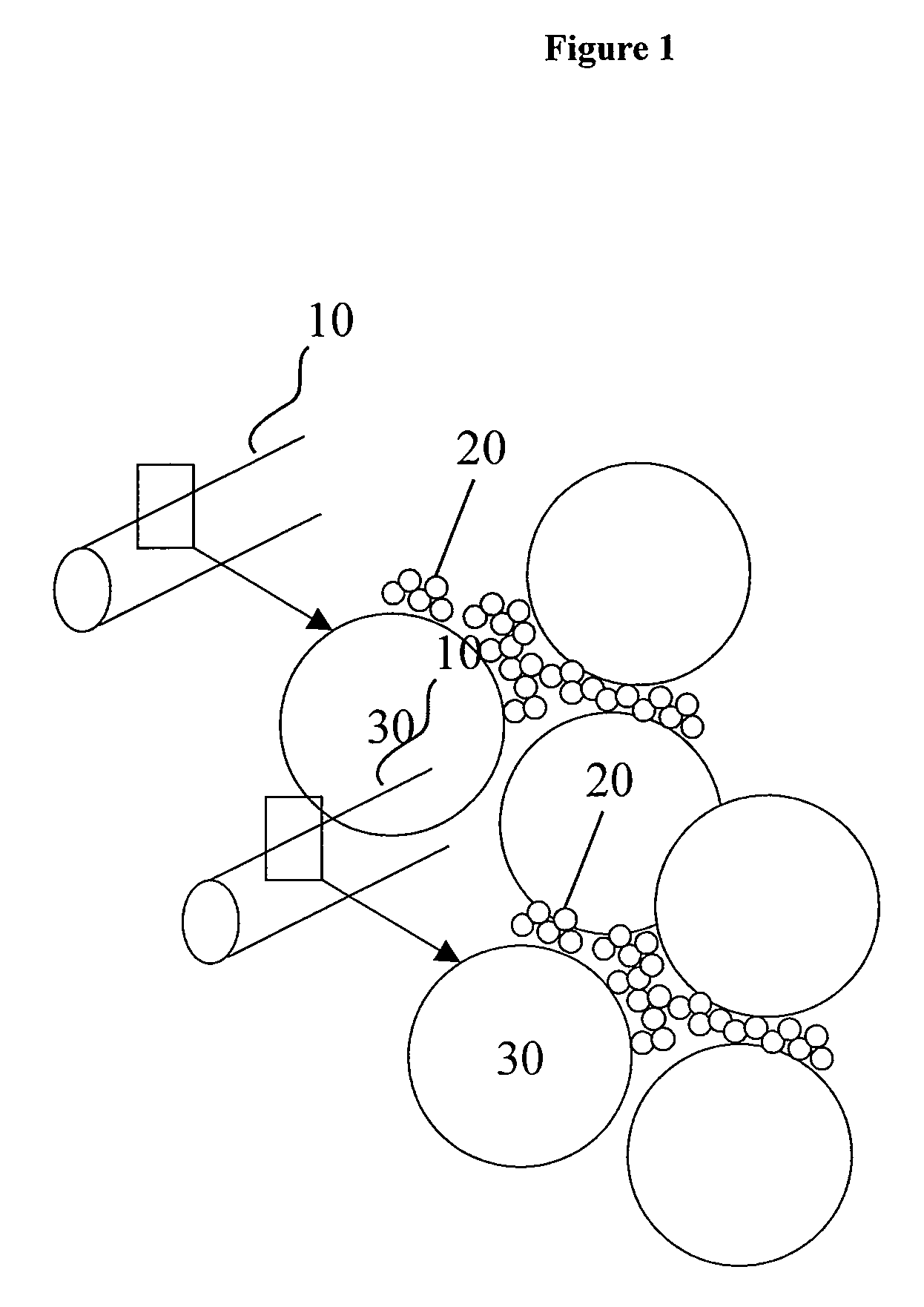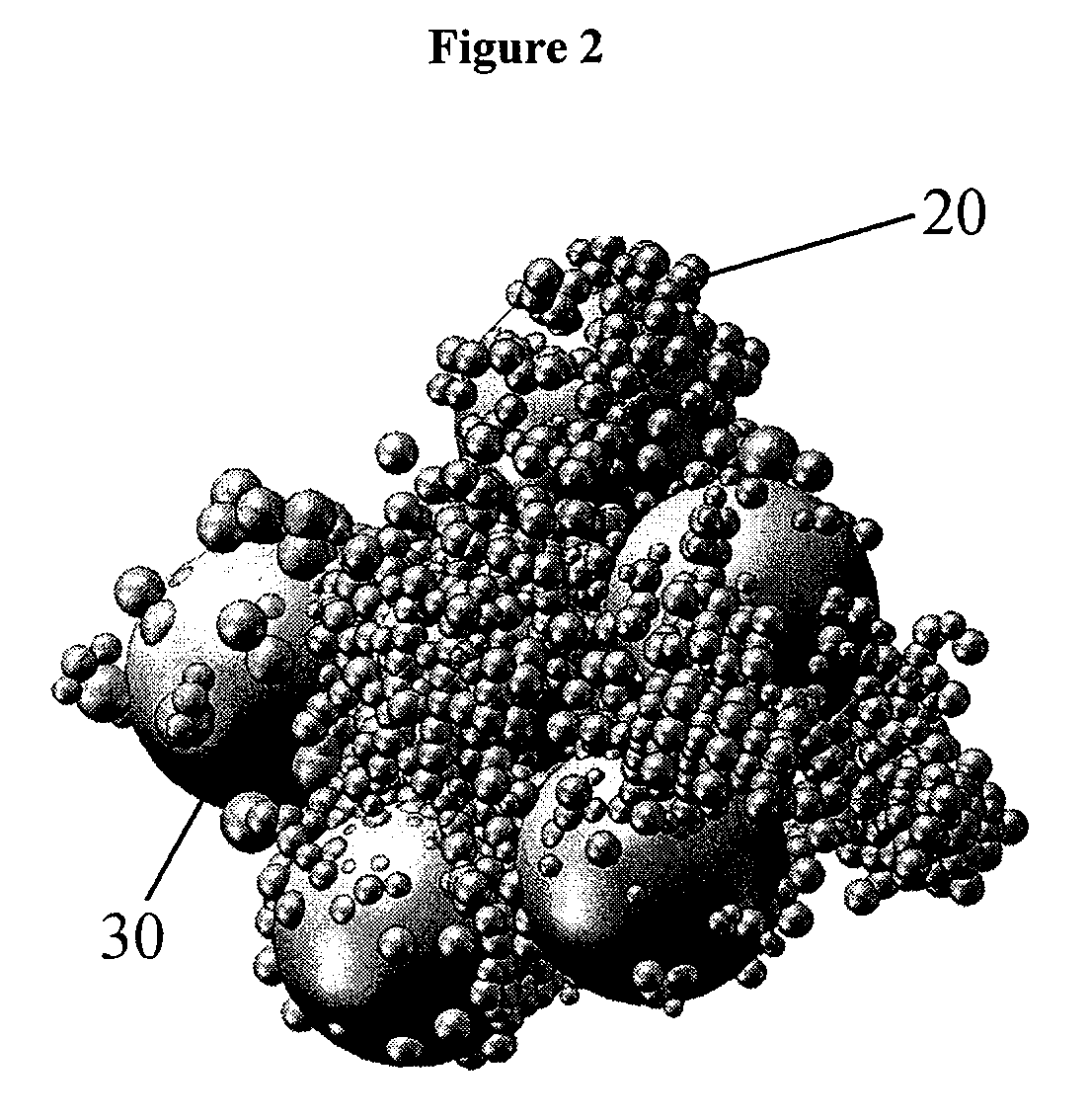Porous, degradable implant made by powder molding
a powder molding and implant technology, applied in the field of at least partially degradable implants, can solve the problems of increasing the thickness of the stent strut, the inability to inject or extrude powder mixtures, and the inability to meet the requirements of injection or extrusion molding, and achieve the effect of sufficient pore volum
- Summary
- Abstract
- Description
- Claims
- Application Information
AI Technical Summary
Benefits of technology
Problems solved by technology
Method used
Image
Examples
example 1
[0145]A slurry was produced using Mg nanoparticles and polyethylene beads. Mg nanoparticles was purchased from Metal Nanopowders Limited and polyethylene beads from Impag. The slurry was produced using 200 g of Mg nanoparticles (particle size D50 of about 50 nm) by adding 100 g acetone, stirring its for approximately 1 hour and adding 150 g of polyethylene beads. The slurry was homogenized for another 90 minutes.
example 2
Molding of Discoid Implants
Rapid Heating
[0146]A standard cylindrical hollow mold made out of stainless steel was used with an inner diameter of 3 cm and a length of 8 cm. The slurry of example 1 was filled into the mold until ⅘ of the volume was filled and compacting was carried out by using a standard floating mold die press to form a green body. Subsequently, a compaction pressure of 20 MPa was applied for 40 seconds, then repeating the cycle two further times. The green body comprised a discoid type mold with a diameter of 2.8 cm and a height of 2.5 cm. It was further dried at room temperature for 1 hour and then put into a standard tube reactor. The green body was sintered with a heating ramp of 20 K / min at 600° C. for 4 hours and then cooled down to room temperature within 20 hours. The thermal treatment was carried out under a nitrogen atmosphere at a N2-flow rate of 1000 ml / min.
[0147]The molded body was cut to analyse the pore structure induced by the polyethylene bead filler...
example 3
Molding of Discoid Implants
Two Step Heat Treatment (Comparative Example)
[0148]The process of compacting was repeated according to example 2 with slurry of example 1 within the same mold. The green body comprised a discoid type mold with a diameter of 2.9 cm and a height of 2.6 cm. It was further dried at room temperature for 1 hour and then put into a standard tube reactor. The green body was thermally treated in two steps, first applying a heating ramp of 2 K / min up to 120° C., keeping 120° C. for approximately 1 hour, and then with the same ramp of 2K / min to 600° C. for 4 hours and then cooled down to room temperature within 20 hours. The thermal treatment was carried out under a nitrogen atmosphere at a N2-flow rate of 1000 ml / min.
[0149]The molded body was cut to analyze the pore structure induced by the polyethylene bead filler. The molded body showed macroscopically a irregular surface structure. The fine structure was analyzed using FESEM. The FESEM image showed that the net s...
PUM
| Property | Measurement | Unit |
|---|---|---|
| compaction pressures | aaaaa | aaaaa |
| compaction pressures | aaaaa | aaaaa |
| compaction pressures | aaaaa | aaaaa |
Abstract
Description
Claims
Application Information
 Login to View More
Login to View More - R&D
- Intellectual Property
- Life Sciences
- Materials
- Tech Scout
- Unparalleled Data Quality
- Higher Quality Content
- 60% Fewer Hallucinations
Browse by: Latest US Patents, China's latest patents, Technical Efficacy Thesaurus, Application Domain, Technology Topic, Popular Technical Reports.
© 2025 PatSnap. All rights reserved.Legal|Privacy policy|Modern Slavery Act Transparency Statement|Sitemap|About US| Contact US: help@patsnap.com



